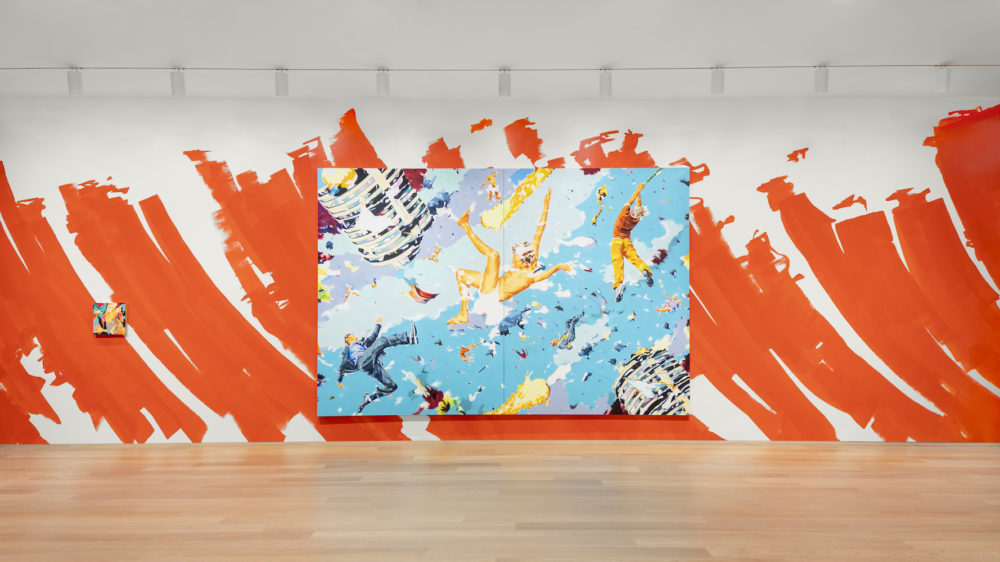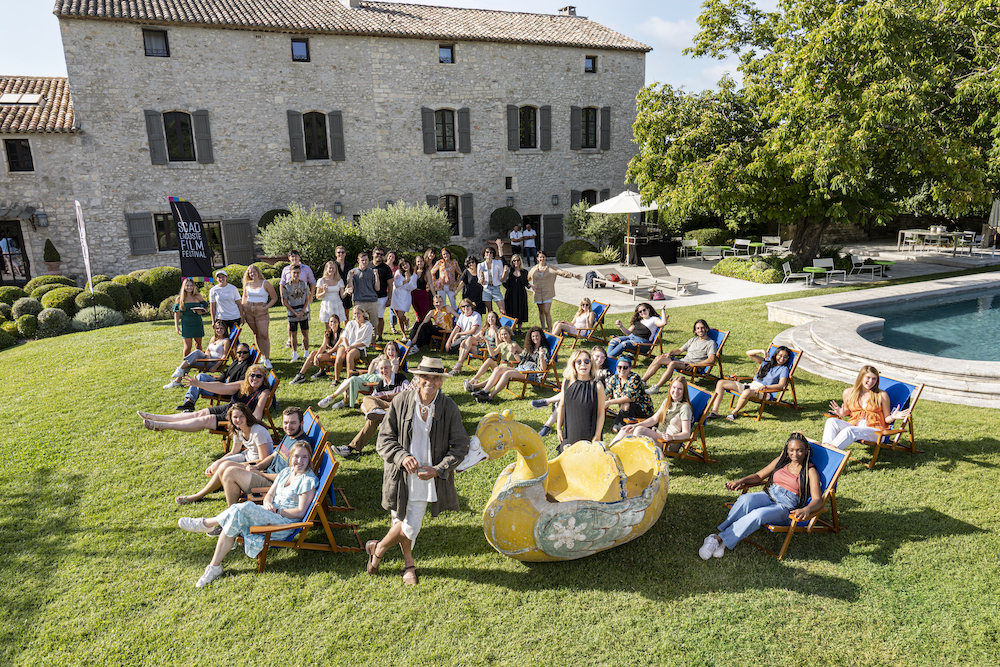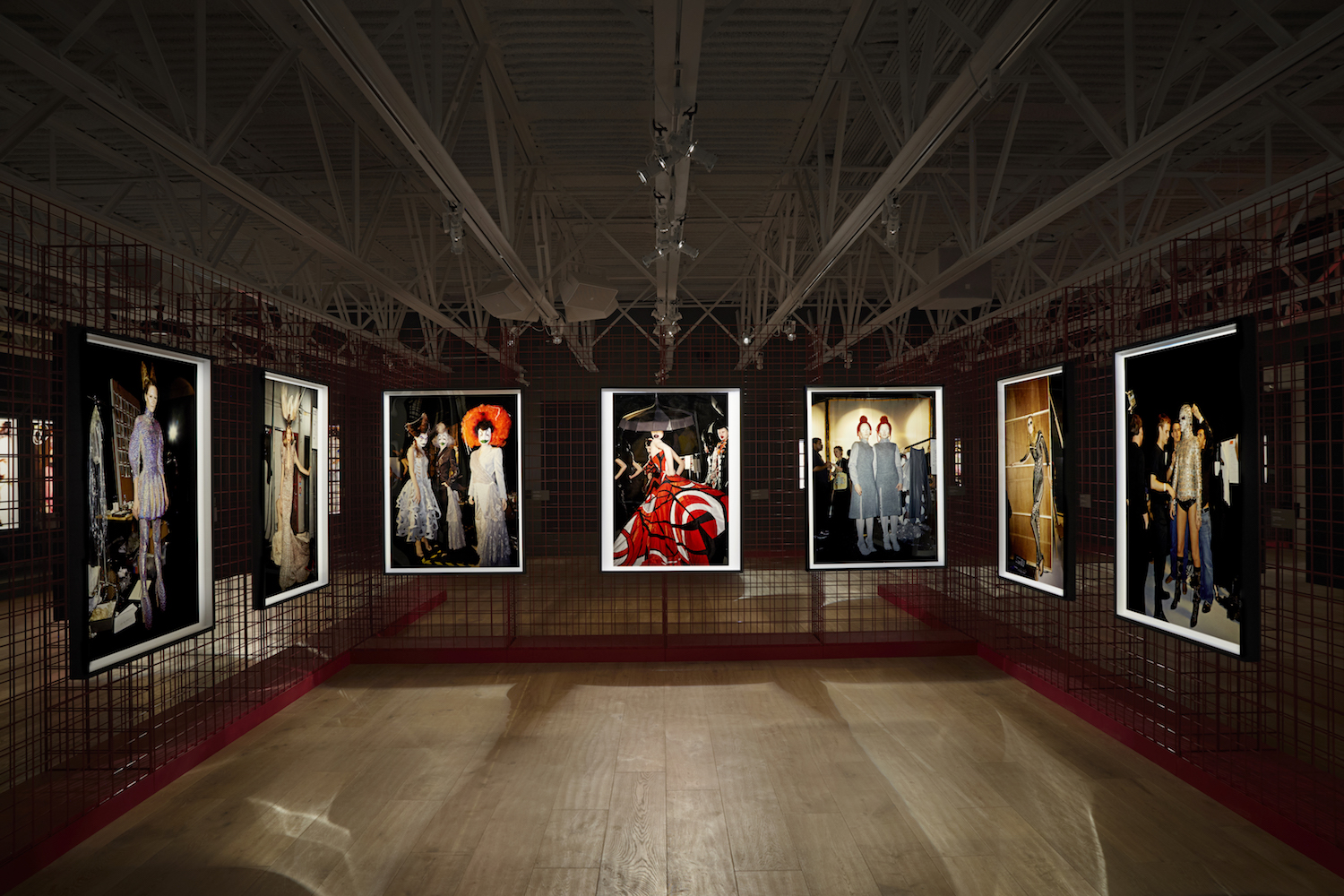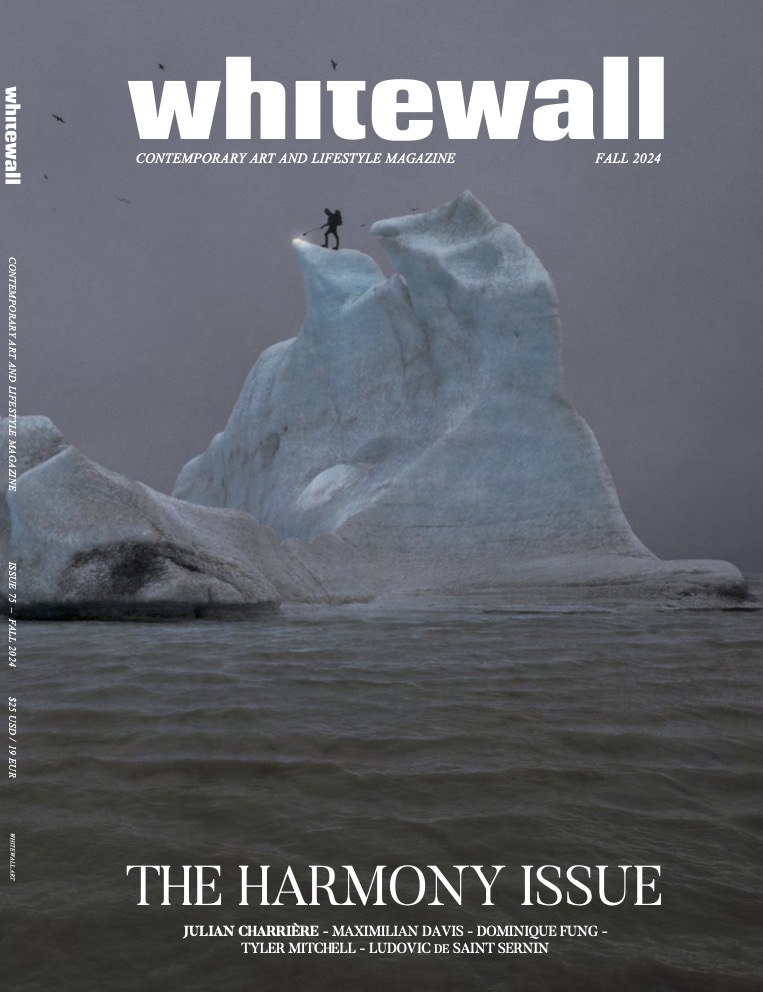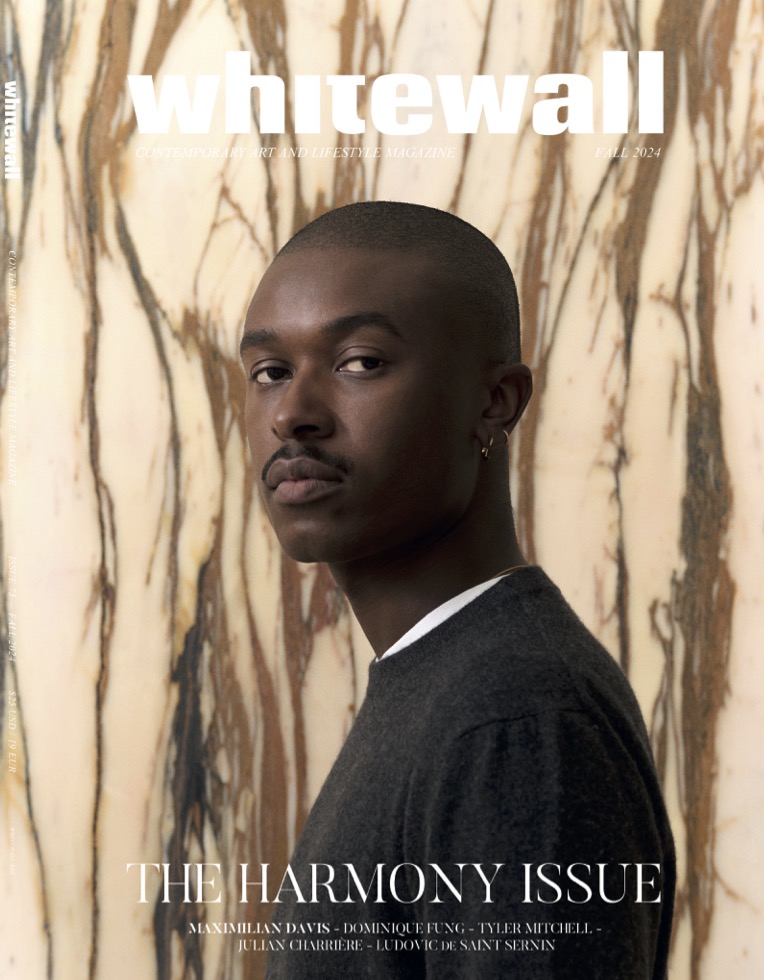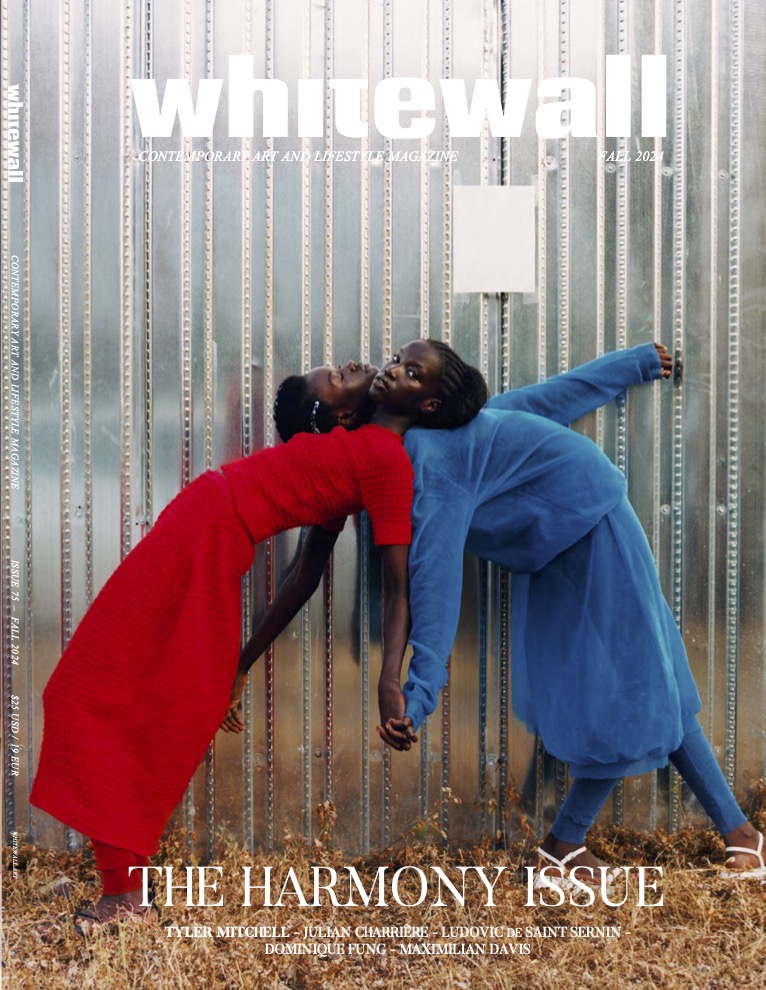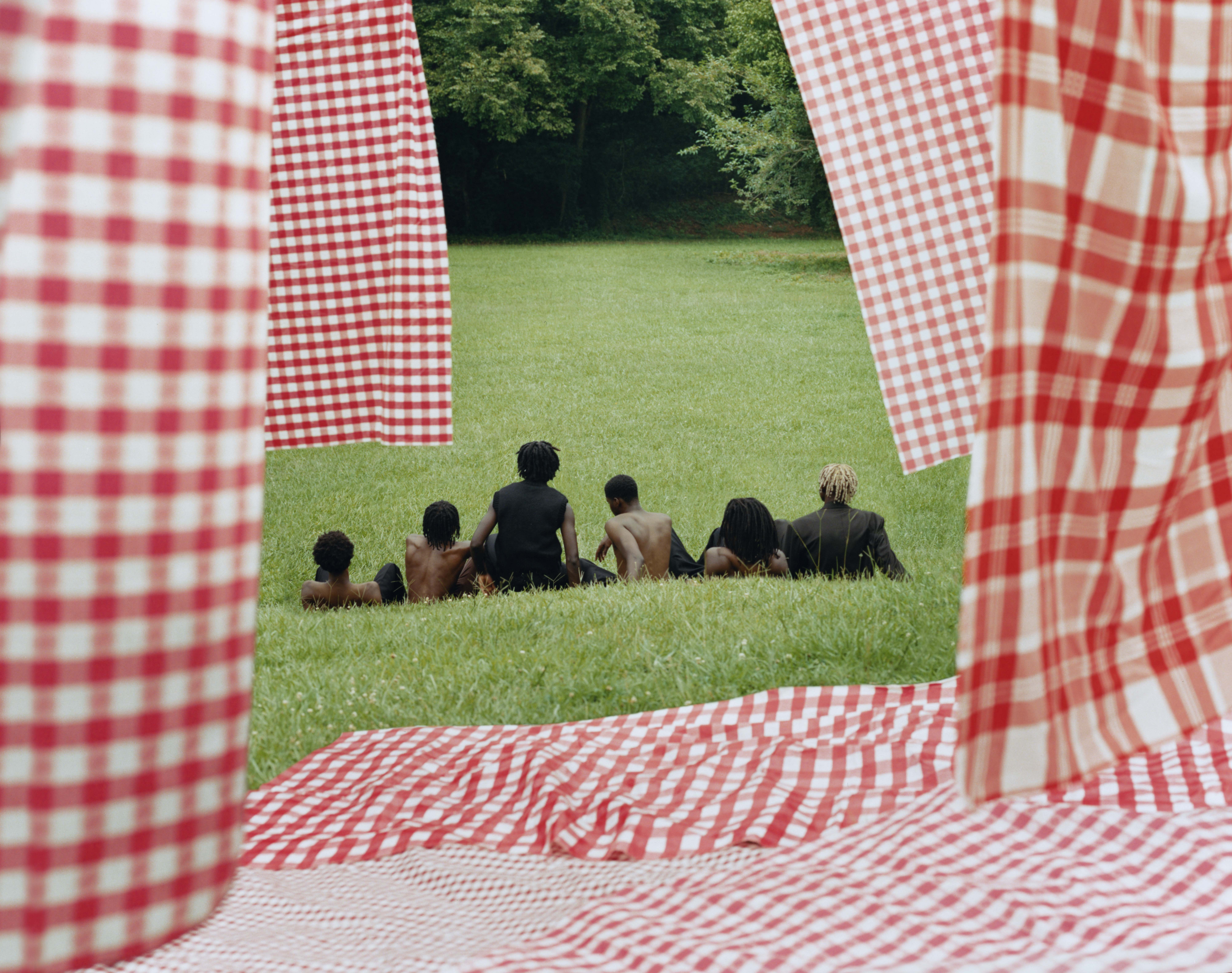The Savannah College of Art and Design’s Museum of Art presented its thirteenth presentation of SCAD deFINE ART. For the annual presentation, new exhibitions were joined by engaging conversations, unique experiences, and an array of streaming programs with international artists and creators on view. From February 28–March 2, the program kicked off with in-person and online streaming events held in both locations in Savannah and Atlanta, as well as panels, tours, and evening gallery meet-and-greets with professors, curators, and exhibiting artists.
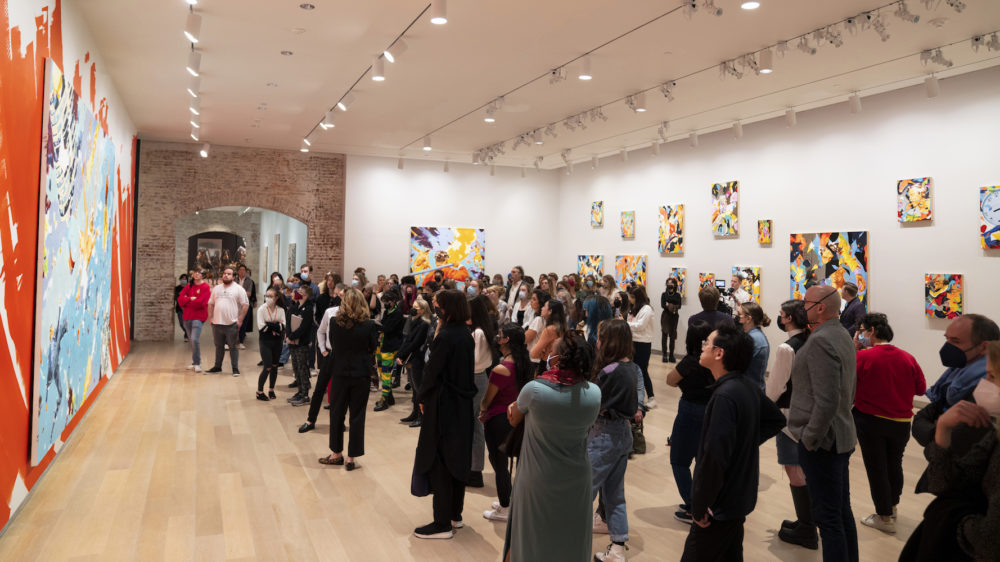 Norbert Bisky, “Mirror Society,” courtesy of SCAD.
Norbert Bisky, “Mirror Society,” courtesy of SCAD.
For deFINE ART 2022, solo exhibitions that explored the histories we inherit opened by both emerging and established artists, including this year’s deFINE honoree, Katharina Grosse, as well as Carter Flachbarth, Hayv Kahraman, Elaine Cameron-Weir, Doreen Lynette Garner, Barthélémy Toguo, Matthre Angelo Harrison, Sang Hoon Kim, and Norbert Bisky. Themes—ranging from migration and assimilation to ancestry and technology—were surveyed through paintings, sculptures, drawings, installations, and more, highlighting our relationship with the past and the present to our possible future.
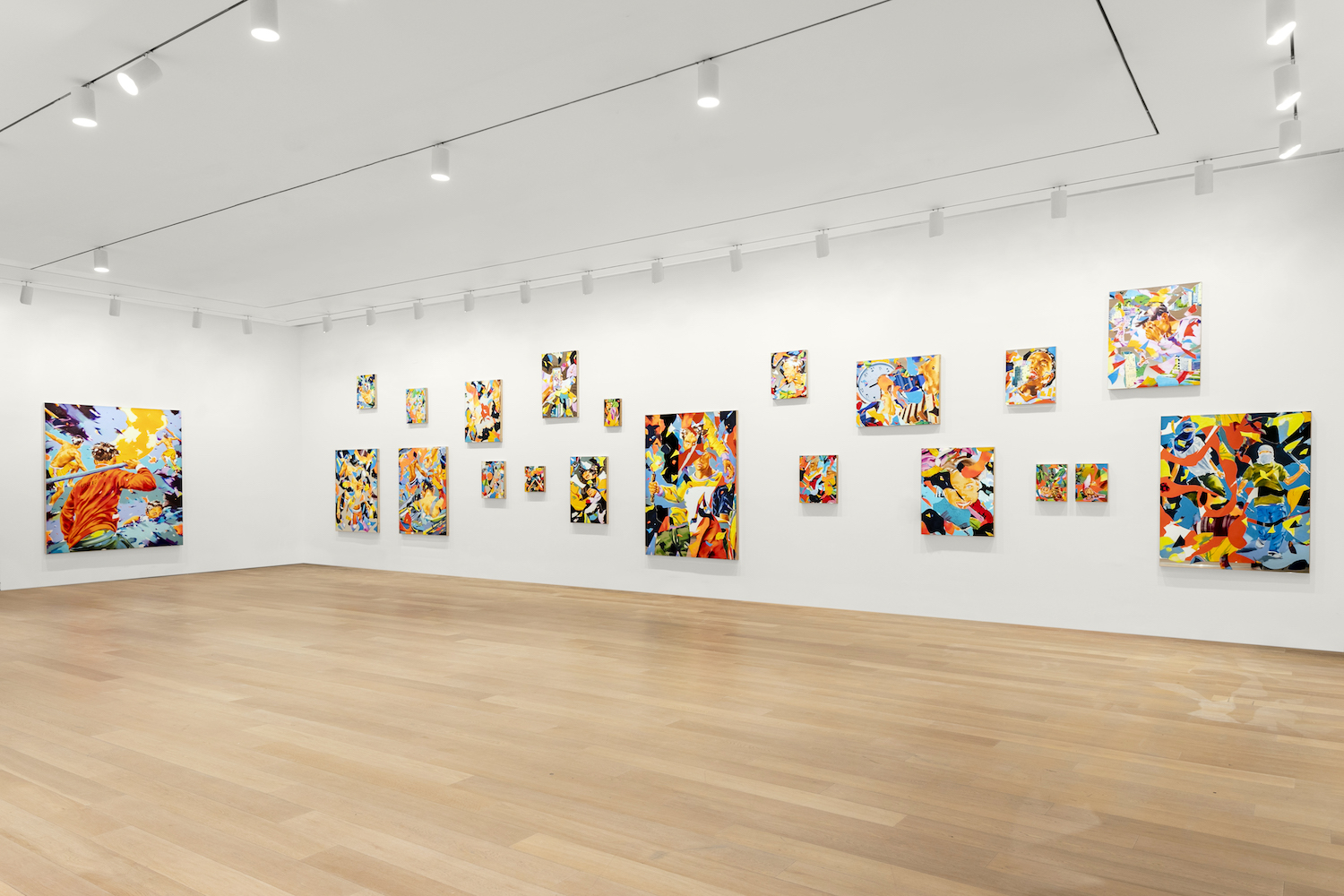
“”
“Coinciding with the 10th anniversary of the opening of the SCAD Museum of Art, the world’s finest teaching museum, this year’s SCAD deFINE ART promises special magic. From honoree Katharina Grosse’s extraordinary paintings of incendiary color to Matthew Angelo Harrison’s sculptures that explore diasporic identities, SCAD deFINE ART 2022 both interrogates the zeitgeist and begets boundless beauty,” said Paula Wallace, SCAD President and Founder.
Among the celebrated event’s solo exhibitions is a group photography exhibition entitled “Icons Only” in the museum lobby. Here, the celebrated exhibition showcases a selection of SCAD MOA’s modern and contemporary photography collection complemented by a selection of portraits taken by SCAD alumni photographers. Icons from the 20st and 21st century who have become synonymous with images of their faces and bodies—like actresses, musicians, visual artists, supermodels, and media moguls—are seen in an array of atmospheres posing for a portrait, balancing empowerment and objectification.
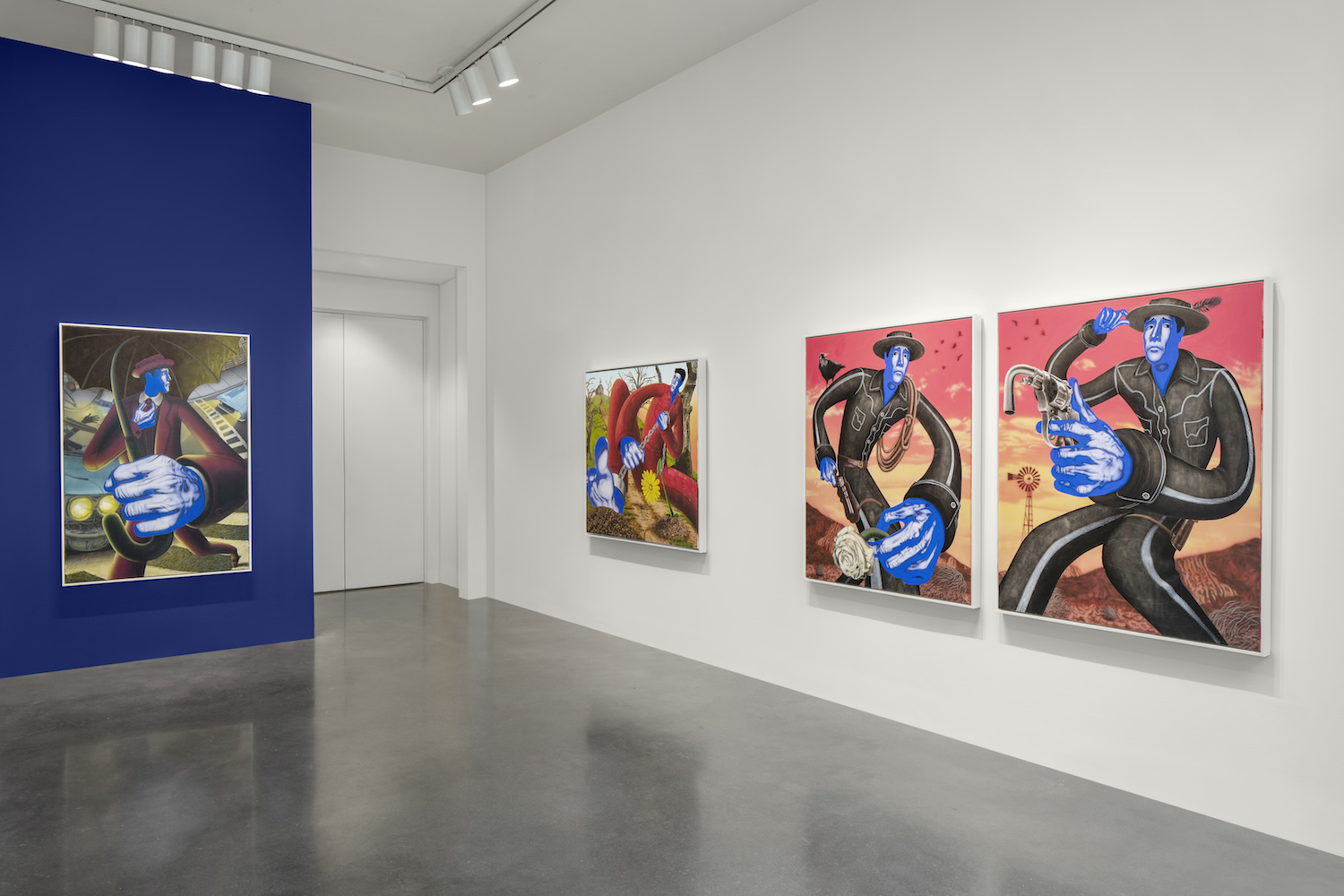
“”
Other solo exhibitions include: “Morality Sucks” by Flachbarth, which reflects anxieties and tensions founded in global events like the COVID-19 pandemic; “The Touch of Otherness” by Kahraman, showing the complexities of diasporic experience for women, including challenges of in-betweenness and othering for refugees; “Dressing for Windows (Exploded View) or ‘everywhere I go people know the part I’m playing’” by Cameron-Weir in the museum’s exterior window boxes, featuring objects that embody deeper meanings related to collective human survival; “Pale In Comparison” by Garner, showing works that engage the history of medical experimentation, humiliations, and objectification of Black women’s bodies; “Urban Requiem” by Toguo, featuring paintings, drawings, sculptures, photographs, and installations that address enduring and relevant issues of exile, displacement, migration, colonialism, murder, race, and war; “Dark Silhouettes” by Harrison, which references colonialism, African diasporas, and the industrialization of the U.S.; “Chill Sleeping” by Gross, spanning the exterior hallway of the museum with large-scale installations of colorful fabric canvases and paintings that challenge perceptions of surfaces and ideas of spectatorship with color, shape, landscape, and elements of architecture; “Mirror Society” by Bisky, presenting paintings of male figures in an array of circumstances with narratives altered by homoerotic, religious, and propaganda iconography; and “Soft Spot” by Kim, showing a selection of playful foam works in various shapes, colors, and textures.
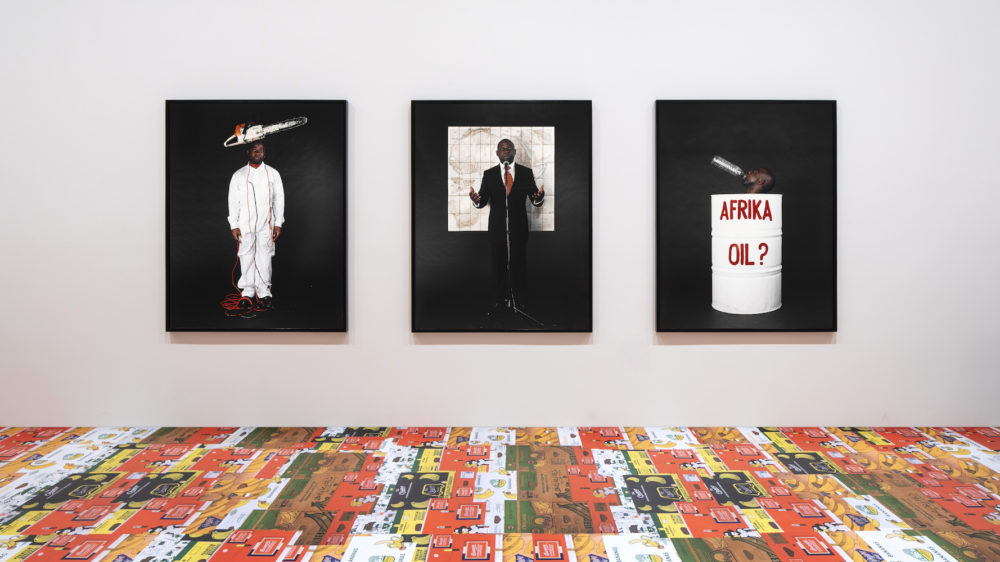
“”
To learn more about their exhibitions for deFINE ART 2022 that are currently on view at the museum, Whitewall spoke with Toguo, Bisky, and Grosse.
WHITEWALL: Barthélémy, your exhibition “Urban Requiem” addressed an array of subjects—from issues of exile, displacement, migration, colonialism, race, and the relationship between the Global North and South. What do you hope the public takes away from these messages?
BARTHÉLÉMY TOGUO: I am an artist, and I had the chance to understand through Albert Camus’s message that the artist had a role in our society. For years I have used my art to echo the voices of those who suffer and dream of another life! My work has a strong and universal social dimension. I hope through my work that the public shall remember that another life may be possible because talking about it in the public space will challenge the world and raise awareness of the pain humans to go through.
WW: At the core of your practice is the sense of belonging, which stems from your dual French-Cameroonian nationality. How did this circumstance shape you, and inspire you to highlight it through art?
BT: Born in Cameroon, having French Nationality, I feel at ease on both continents. These cultures inspire and enrich me and positively affect me to strive to build a better life. I want to show that our society must be open-minded, know how to discover and accept others, and be curious.
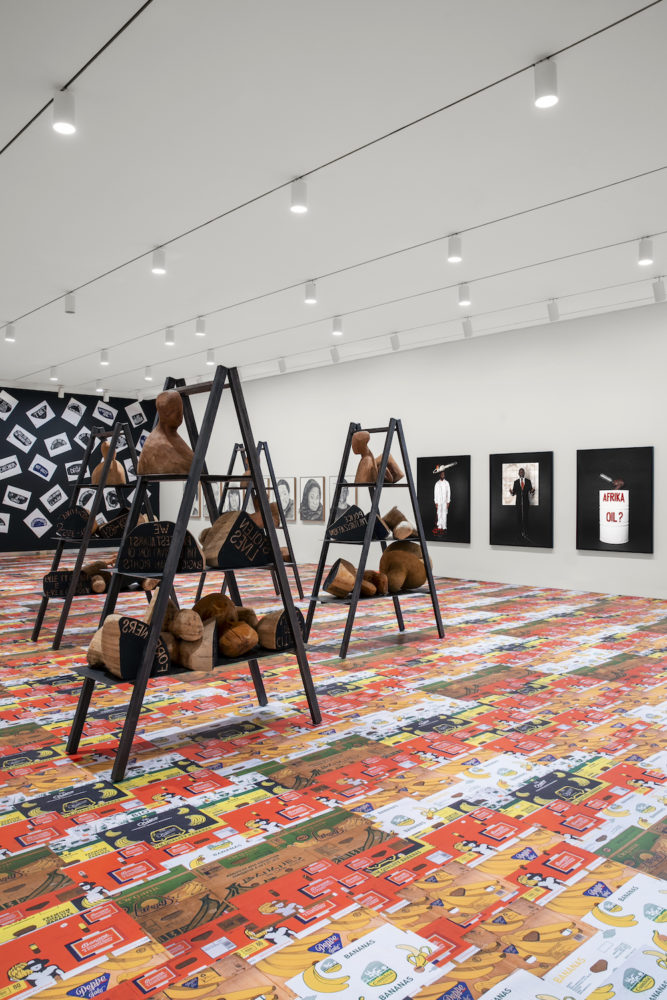
“”
WW: Your recent works were informed by political and social movements, as well as humanitarian tragedies, including the Black Lives Matter movement and refugee crises. At SCAD, days before your show opened, you created a new unplanned work on-site to reflect the war in Ukraine. Can you tell us about this?
BT: The war in Ukraine started when I was at SCAD. I noticed that the world was in tension. I imagined a workshop on my series “Head Above Water.” This interactive work gives the opportunity to the visitors of my exhibition to express themselves on what is happening in the world. They can react by leaving a written message on a postcard, they can open their heart, and launch a debate. I also produced on-site a large work on paper in echo to the engravings of Fransisco Goya, The Disasters of War. It shows a man suffering in the torments of war. It raises questions on our past and addresses the issue of can we ever learn from the history of humanity.
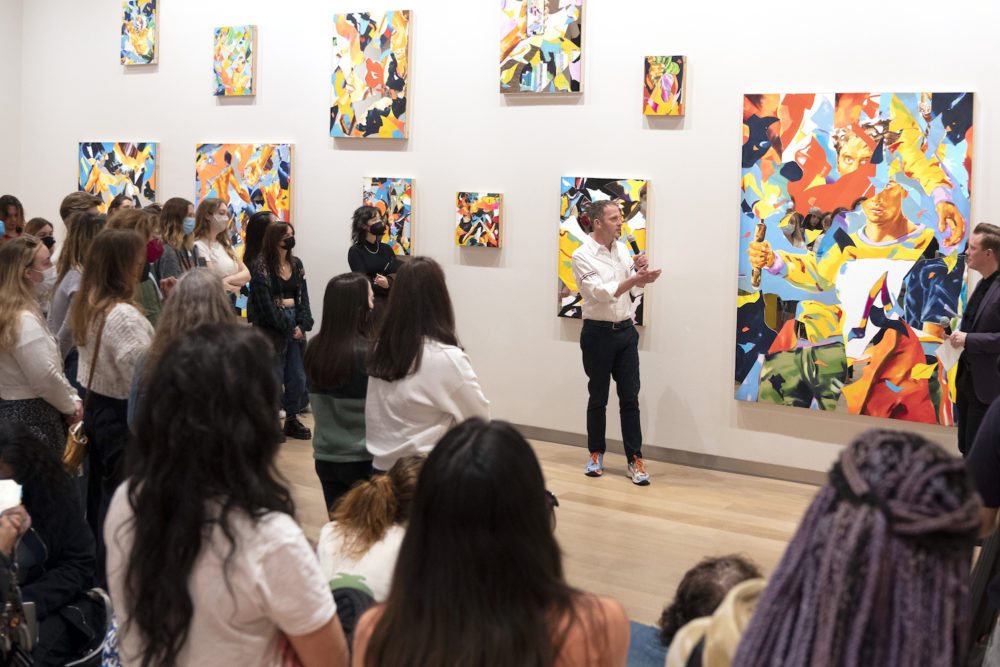 Artist Norbert Bisky and SCAD MOA Associate Curator Ben Tollefson in conversation at deFINE ART 2022, courtesy of SCAD.
Artist Norbert Bisky and SCAD MOA Associate Curator Ben Tollefson in conversation at deFINE ART 2022, courtesy of SCAD.
WW: Norbert, your presentation “Mirror Society” reflects chaos, the physical struggle for male figures, and nostalgia. Why are these topics explored in the works on view?
NORBERT BISKY: It’s hard to translate the visual world I have in mind—and express on a canvas, and then later on in the mural works—within a few phrases because I’m in love with painting because it goes beyond language. That’s a very important point, even though I’m a figurative painter and there’s a lot of elements you could recognize in the work. I still prefer to paint instead of talking about things. What I’m trying to do here is position myself in this world. I come from a different society—the former East, the former Soviet Empire in East Germany—and basically all of my adult life, I spent in the Western world. That gives a strange contradiction if you’re sensitive enough and you try not to ignore it and instead focus on the two societies, I’ve been living in. That means there are a lot of topics that I like to mention or express.
On one hand, the world is super beautiful, and my life is really beautiful. I have a good life, and I’m thankful for it every day. I try to catch some of that light, beauty, and colors in my work. In contrast, we live in tough times and I’m super sensitive about it. I really feel it. And you can feel it in Berlin, which was the center of terrible destruction and horrible violence throughout the 20th century. Right now, we are back in a situation where we have war in Europe—and even the war in Ukraine isn’t far from Berlin. It feels very near. I’m trying the impossible to connect both—the beauty and the chaos, the destruction and violence. And the things I cannot connect. I always have the impulse to talk about the beauty of life, but I’m confronted by the hard facts.
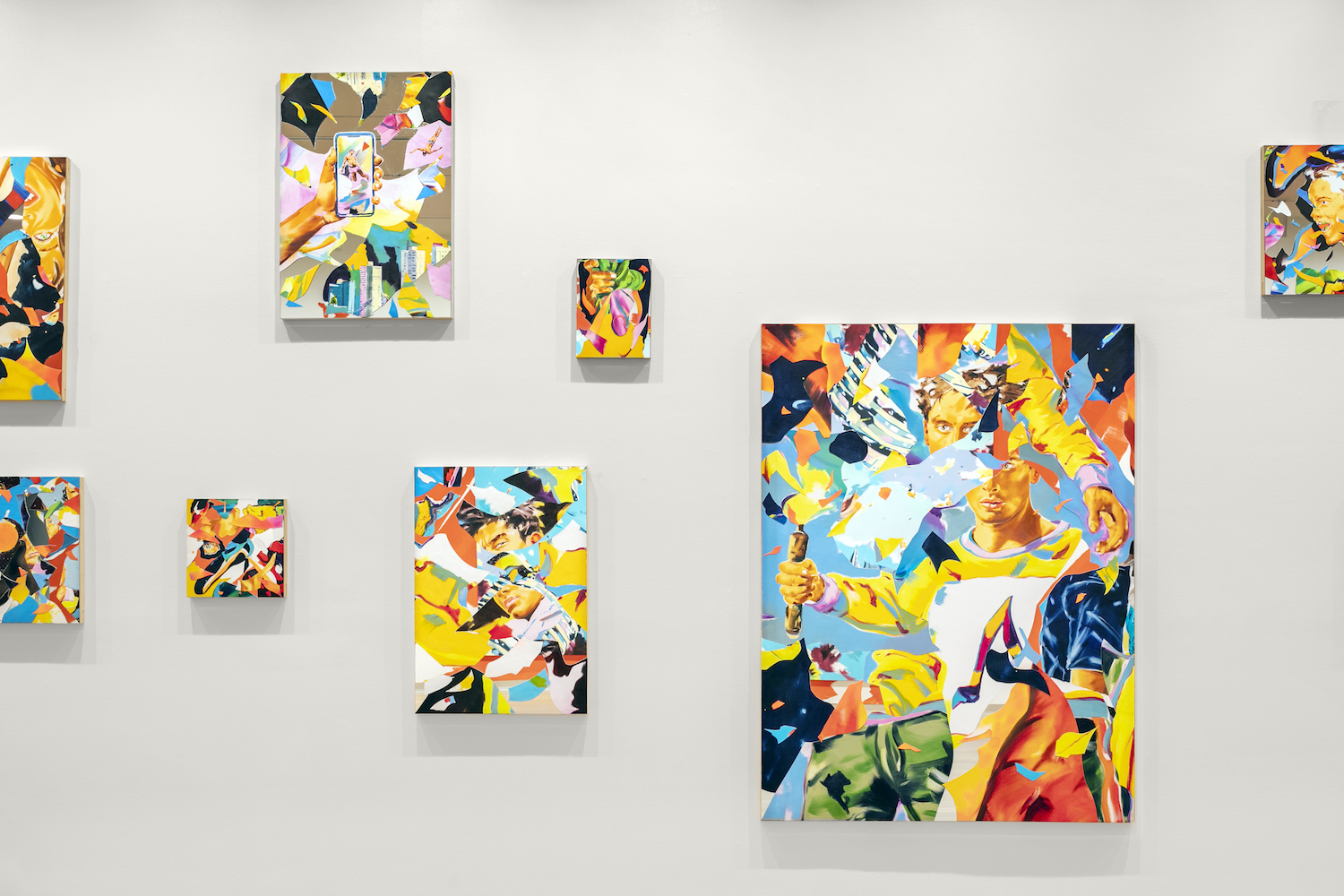
“”
WW: For this exhibition, you gained inspiration from an array of topics—including Socialist Realism art, propaganda of your youth in the former German Democratic Republic, Christian symbols, and homoerotic imagery. Why these moments and mementos?
NB: I started working with remnants of Eastern propaganda images because it’s such visual garbage. Why? Well, it’s not very well executed. The propaganda painters had to paint very quickly to fulfill the party’s needs. And then it’s kind of the opposite of art because it doesn’t give an individual viewpoint or individual expression. Instead, it’s just an advertisement for an ideology. It’s interesting that it looks, somehow, like a real visual language, but instead, it’s a very cheap, stupid, and fake visual language. It deals with fake promises. And I had a very brainwashed childhood, to be honest. When I was 9 or 10 years old, I had the feeling that I was living on the good side with the good guys and the guys in the West were the evil guys. And that was totally the opposite. But being that age, I didn’t realize it. When I started studying art at the Art Academy of Berlin after the war, there was nobody working with these kinds of propaganda images. Instead, my professor told me, “You’re coming from this strange Eastern world, you should work with that. That’s your topic. Get it out of your head and onto the canvas.”
And of course, there are a few other influences. I studied for one year in Madrid, and there comes all the Christian imagery into my visual language. I spent a lot of time in the Museo Nacional del Prado and in churches in Spain. The great moments of Spanish painting are always somehow related to religious images. I was painting copies in the Prado of different painters back then in the ‘90s, and I still very much have this in my head. There’s always Christian imagery of taking Jesus from the cross; Jesus going to heaven; the last supper. It’s also a big influence for me.
Then, the homoerotic topic. I grew up in a world that suppressed homoerotic imagery, thinking it was super evil and forbidden. But I lived in the party world in Berlin within the last 20 or years—and it’s the opposite. There are buildings that used to be socialist factories that have stopped production and now host huge gay parties. The electronic dance music culture is huge in Berlin, and it’s almost like a replacement of the socialist working-class culture. That’s where this imagery comes in because it stems from the last decades for life in Berlin. My studio is in a neighborhood that is surrounded by those clubs. The most famous club, Berghain, is about 800 meters away from my studio.
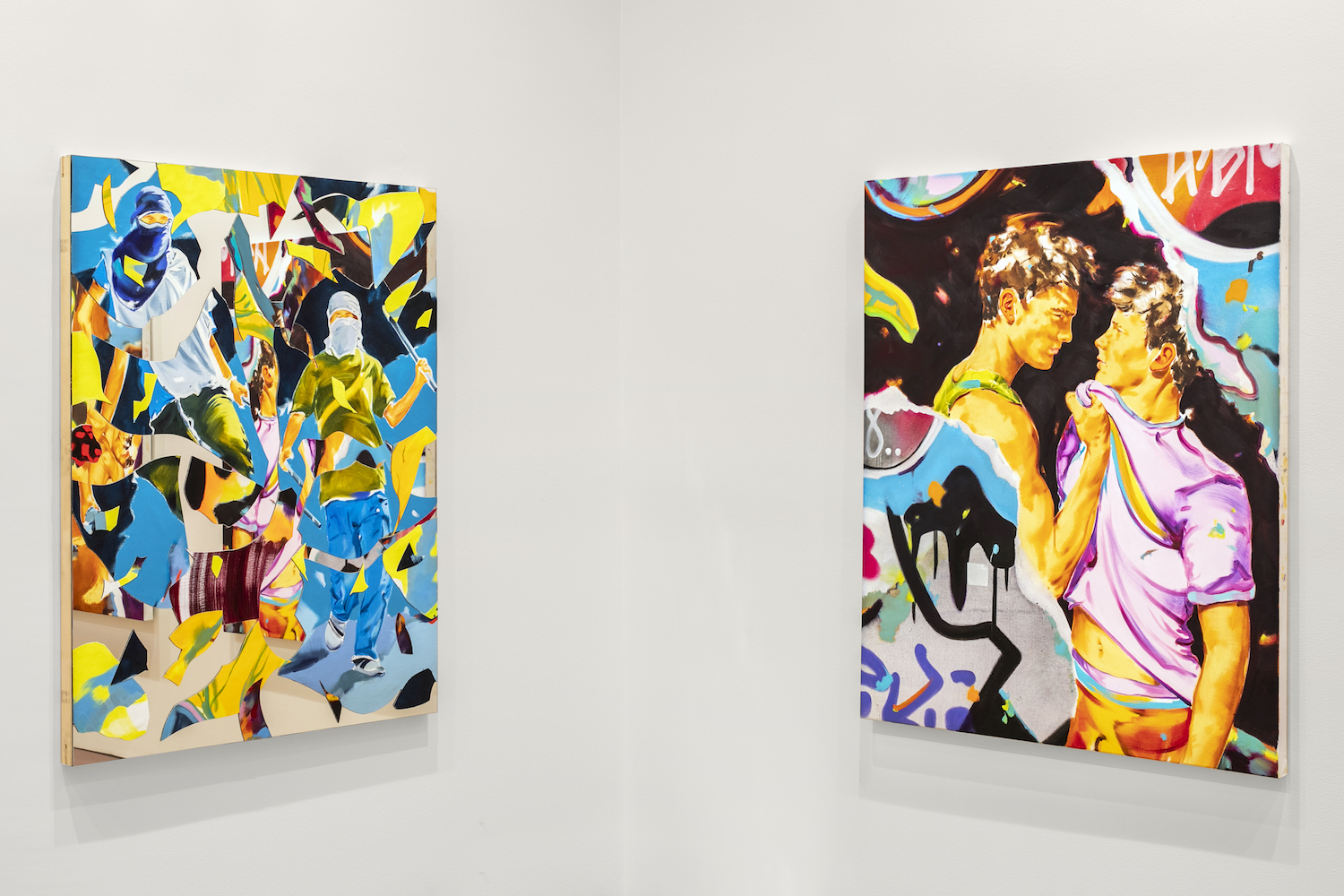 Norbert Bisky, “Mirror Society,” courtesy of SCAD.
Norbert Bisky, “Mirror Society,” courtesy of SCAD.
WW: Your show included a mix of existing and new works. For the new pieces, you mentioned they took in total about seven months to create. How were they made?
NB: Most of the paintings I started in Spain. And that’s where the bright, light, translucent colors come from. Sometimes, it’s just one of two surfaces on the canvas—very light pink or yellow—and then I send the paintings to Berlin. They’re totally unfinished, but in Berlin, I start to paint elements onto the primed canvases. I’m looking for certain imagery—that starts with photography—that would be something that I found on Instagram, like someone holding his phone. We are living so much in this posing era, everybody’s posing, so I’m really interested in these types of images because it stands for our time. Or it could be an idea of a situation that I dreamt of. Then, I try to find a way to visualize it.
So, there are different elements in the canvases. I have a Black Lives Matter protest in there, someone holding a phone, guys that have their faces masked and they’re rioting the streets and are about to destroy cars or loot shops.
I wait until the canvases are dry, and once they are, I take a big knife and cut them into pieces and re-puzzle them again. I have a very fragmented point of view. I think it’s impossible to have a clear world view like the old masters in the 19th century who said, “I have a big painting here and I’m going to let you know exactly what I think about the world.” Today, it’s very complicated; a very fragmented world. That’s why I cut all of the canvases into pieces on the floor of my studio. And you have to cut them fast, otherwise, they don’t look as dynamic. Then, I have a pure, blank mirror on the wall, mounted on the usual stretches I’d use for canvases, and then I move the canvas parts from the floor to the mirror. It’s an exciting process. It has a very childish side and feels like puzzling together. I mount one piece of canvas on top of the other, and the different mirror pieces start to talk to each other. So, there are fragments of the same canvas appearing on the same mirror pieces at the end.
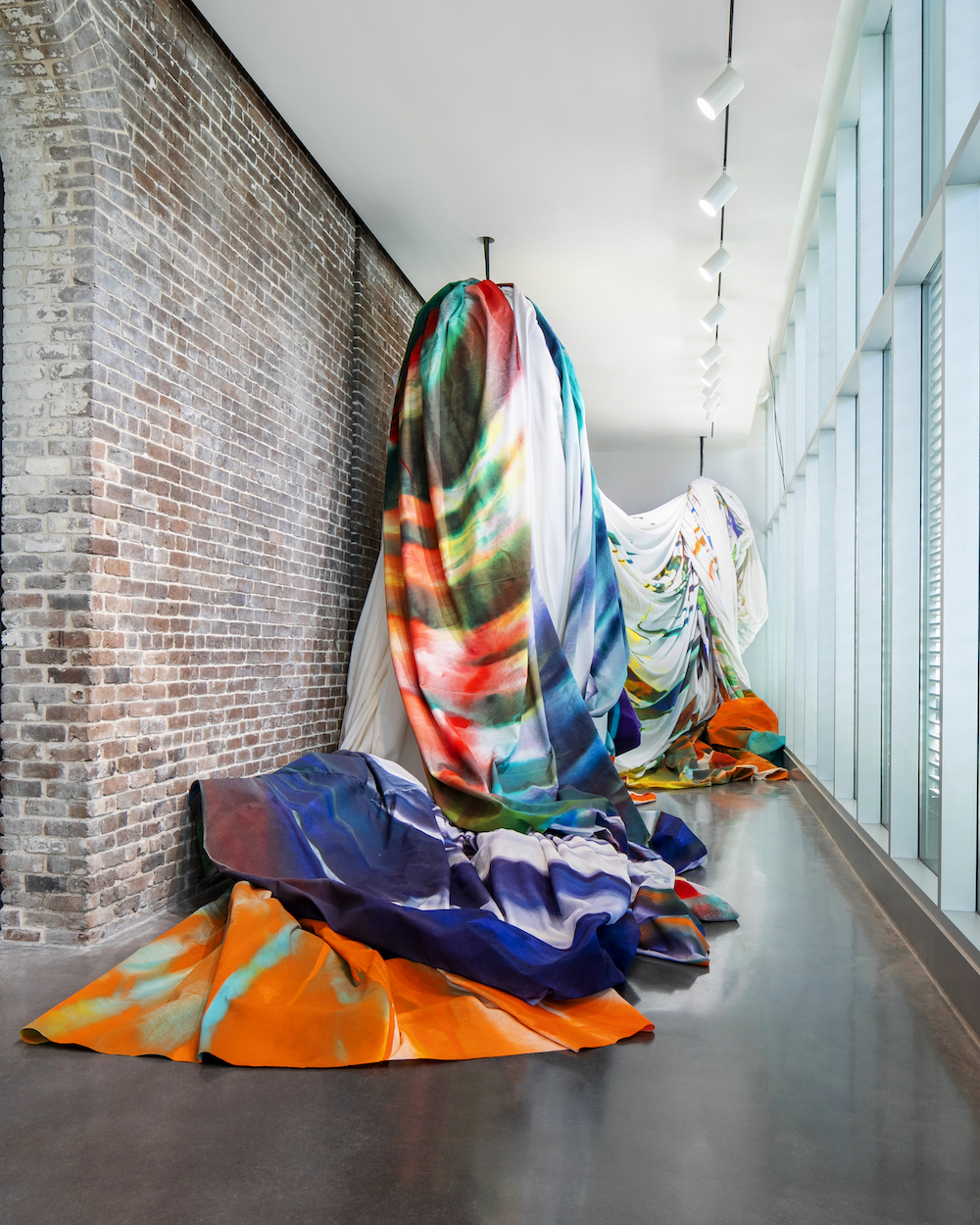
“”
WW: Katharina, about five years ago, you started working with draped installation works and have since repurposed some of them, such as the one we see here now. Why?
KATHARINA GROSSE: These works disguise and change the space a lot because they’re soft. They fold. They have a different architectural feel. There are right angles, and all of a sudden, the draped pieces change the space. After a very big first show at Carriageworks in Sydney, I was wondering if I could reuse them. If they were tailor-made for one space, could they be used in a different way somewhere else? We started to experiment with re-using the draped works, which is difficult because you can’t re-drape them the original way, but that is also very fascinating. So, you get entirely different things—bits and pieces that were maybe not seen in the other show because it was folded in. But now, all of a sudden, these structures come out when you re-do it somewhere else. This was a piece that was used in Helsinki at the beginning of last year. That space, for example, was 20-feet high. Here, that’s less, so we had to adapt and find new ways to show them.
I wanted to have in this show different paintings from different years, and one piece of my practice that’s related to the space. The installation is cut into three different parts, with paintings between them from different years. The most recent is from last year.
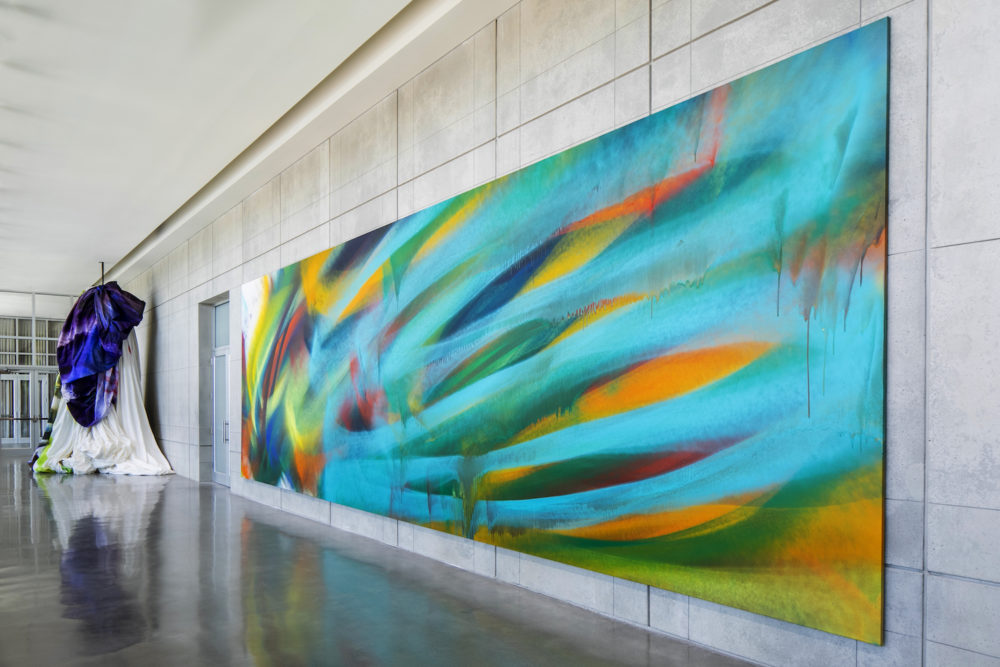 Katharina Grosse, “Chill Seeping,” courtesy of SCAD.
Katharina Grosse, “Chill Seeping,” courtesy of SCAD.
WW: Most of these paintings were created prior to isolating amid the global Coronavirus pandemic. When you look at those works now, does it bring on new meaning?
KG: No, because I’m always very isolated. Most of the time, I’m alone. I have a team that comes in every now and then. It didn’t really affect me until the end of last year. That’s when I really started to feel that my life—all of our lives—was very different. In terms of my practice, what I do in my studio, I could continue working.
WW: Did the pandemic change the way you thought about the work you were doing? The materials you were using?
KG: Well, I think about what I can do all the time—like, can I use recycled works? I’m working right now on recycled polyester. For the past ten years, I’ve reused water. All wastewater is being collected and we have a chemical to separate the pigment and the water. We’re trying to be plastic-free, which is difficult. My flight itineraries are different; I try to fly less and connect more things in one flight. I’m far more selective with things I’m going to do. And I think our social relations have changed a lot, too.
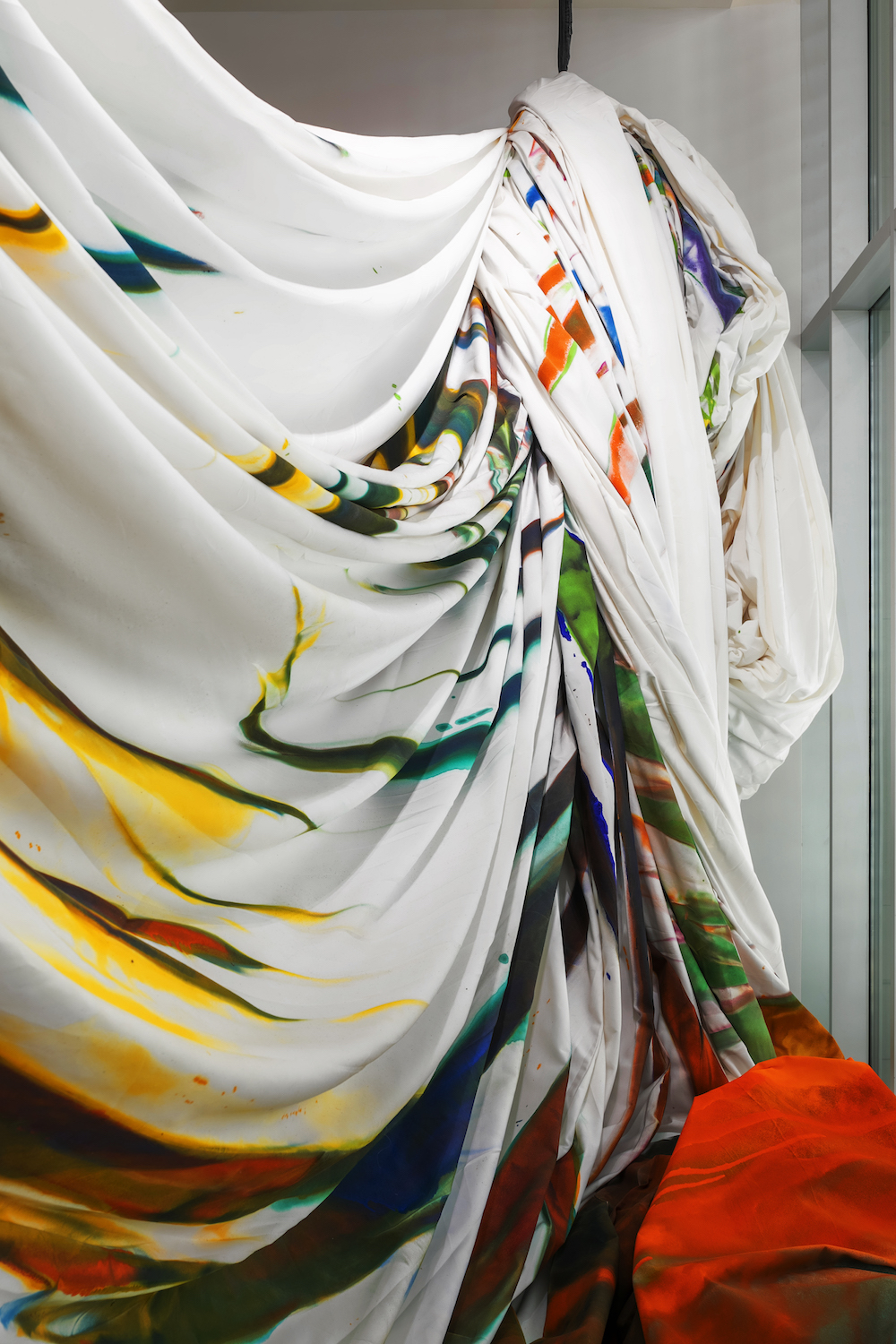 Katharina Grosse, “Chill Seeping,” courtesy of SCAD.
Katharina Grosse, “Chill Seeping,” courtesy of SCAD.
WW: You’re the deFINE ART 2022 honoree this year. What has it been like working with SCAD?
KG: It’s been really interesting. I’ve never been to Savannah, so this is the first time. It’s a great institution with an opportunity to see the work in the context of the other artists that are showing here at the same time. It’s great for the students to have all these approaches available in the flesh; to meet the artists and hear us talk. It’s also been great to work with Humberto. That’s been enriching.
WW: The pandemic impacted the way viewers take in immersive experiences. How are you approaching experiential works today? Are you re-examining the way you’re approaching space?
KG: It’s always different. I’m gathering experiences doing the work, as well. It’s not like I can just do something that’s planned; making the work also changes the way I work and how I look at my own work. Even coming here today and seeing it here in the flesh, after being installed by a fantastic crew, it might change the way I make the next show.
But there is something that emotion can help us to better in certain ways; make us more alert when we’re encountering something that doesn’t feel right instead of pushing it aside. I’m listening more to my sixth sense in a way. That certainly has changed. I also think the preparedness to listen better has come to me more. And how we share space has changed. How we need outdoor space. Two years ago, I was doing a show when the pandemic first started, and all of our talks were outside on a bench or in a park. I thought it was a great way to collaborate. The readiness to change things has been astonishing.
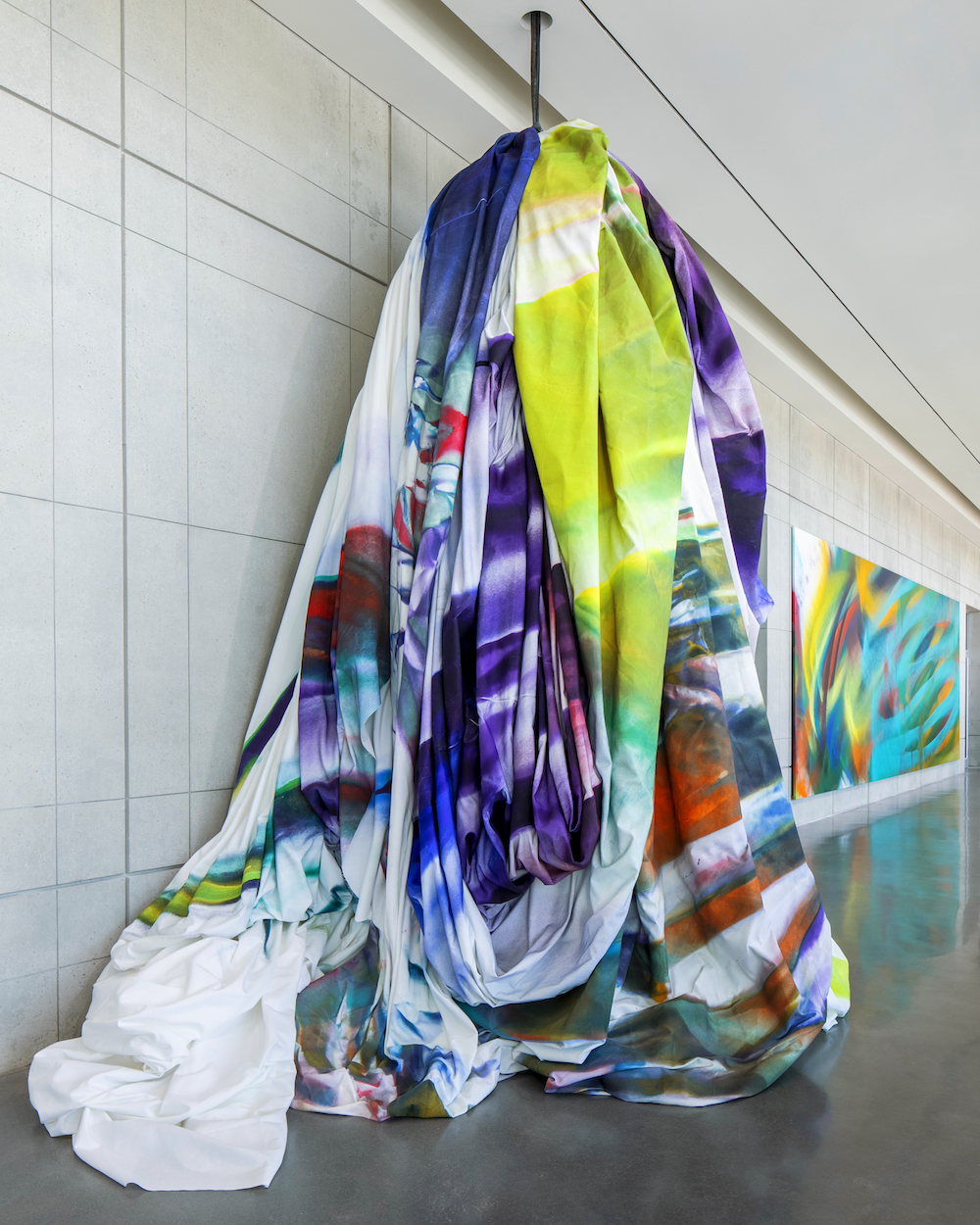
“”






